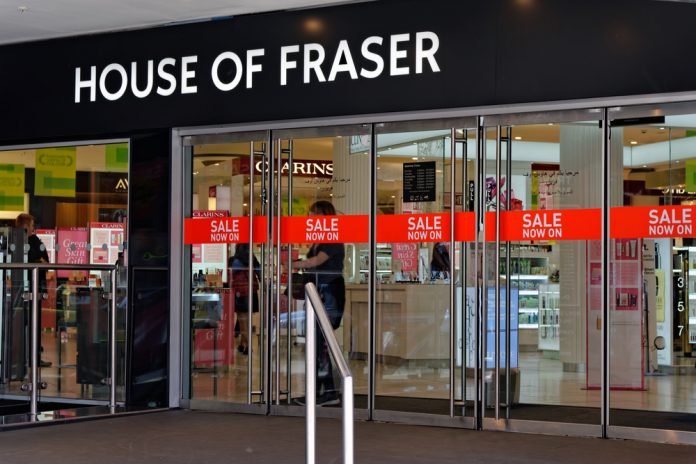House of Fraser has denied reports of imminent collapse, insisting rescue talks remain ‘on track’.
The high street retailer is reportedly under pressure after talks between its Chinese owner and lender stalled over the weekend.
However, House of Fraser dismissed the speculation, calling these claims “inaccurate and unhelpful”.
Chairman Frank Slevin said: “We are on track with our plans to enter the proposed CVA agreement. The funding from C.banner is another important milestone in this complex process.”
He added: “We continue to have very constructive talks with our banks and other stakeholders who are positive about the plans.”
Back in March, concerns over the future of the department store began to mount after a round of negotiation talks collapsed.
House of Fraser is looking to refinance or extend the terms of £224 million in debt, which is set to be repaid in 2019.
Last month the retailer confirmed it would start a company voluntary arrangement (CVA), which allows companies to shut loss-making locations and reduce rents.
As it stands, House of Fraser has 59 stores across the UK and Ireland, employing 6,000 staff, alongside 11,500 concession staff.
In 2014, the high street giant was acquired by Sandpower, which is owned by Chinese businessman Yuan Yafei.
Back in September it was revealed that Mr Yafei’s company injected £25 million in cash into the struggling firm following widening losses and a persistently difficult retail environment.
Since the acquisition, the high-street giant has sold off a portion of its brand names and intellectual property for £30 million, alongside locating £26 million of annual cost savings as it looks to mitigate losses.
House of Fraser is one of the latest British retailers to feel the pressure of an increasingly volatile retail climate.
Falling foot fall numbers and continual signs of consumers tightening their purse strings has sent the British high street into disarray.
Earlier this year both Maplins and Toys R Us announced they had gone into liquidation, amid years of falling sales and persistent cost pressures.

